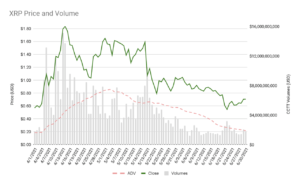Diversify, diversify, diversify. That’s been the motto of countless investment strategists for years—and for good reason. But unless you’re a high-end investor, you may find it difficult to purchase a full portfolio of stocks, especially if you opt to invest in high-performing ones like Tesla or Apple.
In this case, fractional shares can be helpful. They allow investors to purchase mere portions of stock shares, which can be a way to diversify your portfolio without spending a ton of cash.
In this article, we’ll take a closer look at the practice of fractional share investing and whether it’s a smart move for your portfolio or not.

What Is Fractional Share Investing?
As the name may imply, fractional share investing refers to the practice of buying only fractional portions of a share, rather than the whole thing.
If you’re new to the world of investing, don’t get tripped up over terminology. A “stock” refers to the ownership an investor takes in a particular company. A “share” is the basic unit of ownership in a given company.
If someone owns ten shares in a particular company, their investment is ten times the current share price. Each share is the exact same price, but the share price will go up and down as the market fluctuates. You profit when you buy a share at one price, but sell it when it reaches a higher price.
When is it a good idea to purchase fractions of a share? Let’s highlight three ways that fractional share investing can be helpful.
1. They Help You Afford Expensive Stock
Let’s imagine that you want to invest in Amazon stock. Each share of Amazon stock will cost you over $3,000, based on current stock market performance. That’s steep for the typical investor, who might prefer to invest in a diverse portfolio of stocks, rather than sinking too much money into an individual stock.
But fractional shares can allow you to invest in a high-end stock without the risk of overcommitting your assets.
For example, imagine that you have $5,000 to invest. You could purchase an entire share of Amazon stock and have only $2,000 remaining. Alternatively, you could buy 50% of an Amazon share ($1,500), and have $3,500 remaining. And since some brokerage firms let you purchase stock fractions of 10% or even lower, you can imagine how you might use your $5,000 to buy stock in multiple companies at a literal fraction of the share price.
2. They Help You to Diversify Your Portfolio
In our example above, you had $5,000, which was more than enough to buy a $3,000 stock share. Why wouldn’t you just invest in one company?
Most financial advisors will stress the need to diversify your portfolio.
Diversification refers to the strategy of buying multiple stocks from a wide range of companies. The stock market is notoriously unreliable. Invest too much in any one individual stock and you risk losing it all if the share price plummets or the company goes under.
Likewise, a diverse portfolio maximizes the chances that one of your stock picks will suddenly take off, allowing you to reap the profits.
How many stocks make a diversified portfolio? There’s no “right” answer to this, but for many financial experts, diversity demands at least 20 stocks — and usually as many as 30 or 40.
If you invest in one particular sector (e.g., tech, health care, etc.), it may be helpful to pick even more in case the entire sector should experience a downturn. For this reason, some financial advisors recommend diversifying not just by picking multiple companies, but by diversifying across asset classes.
If you’re a first-time investor, you may find it difficult to purchase 20 stocks right out of the gate. Young investors might find their money tied up in other assets (student loans, mortgage payments, etc.), making it challenging to achieve diversification right away.
But if you can purchase fractional stock shares, you have a much better chance of achieving a well-balanced portfolio faster.
3. They Help with Dollar-Cost Averaging
Finally, purchasing fractional shares can help with a strategy known as dollar-cost averaging. In this approach, you invest in the stock of one company but only in fractional stages over time.
But if you wanted to invest in one company, why wouldn’t you just invest all at once? It’s hard to determine the “best” time to invest, especially in a volatile market. For that matter, you can’t always predict the performance of any one company. Is it worth buying 10 shares of a stock? Maybe—but maybe not. Dollar-cost averaging allows you to “wade in” when you’re not sure whether you should “take the plunge” into any one company.
By making a series of smaller, regular investments over time, you’re largely protected from significant fluctuations in share price. Basically, dollar-cost averaging protects you from buyer’s remorse, which can happen if you buy a stock at one price, only to realize you could have saved a bundle if you’d waited for the price to dip.
For example, let’s say that you wanted to invest in Costco, which is currently trading at around $440 per share. You could purchase 10% of a share this month, then 10% the next month, and so on until you purchase a full share (or more, depending on your investment plan).
And of course, you can always modify this plan based on your stock’s performance. The point is that fractional shares allow you to calibrate your investment rather than overcommitting your resources.
Do Fractional Stocks Pay Dividends?
Many companies pay dividends to their shareholders. The amount depends on the number of shares you possess. But will you receive these dividends if you only buy fractions of shares? Yes!
As long as the company pays shareholders dividends, you’re entitled to receive them. This means that if the company pays $1.00 per share and you own 50% of a share, you’ll receive $0.50.

How Can You Buy Fractions of a Stock?
Most brokerage firms allow you to purchase fractional shares. However, every brokerage firm sets its own rules, so it’s important to read the fine print.
Some brokers limit the fraction you’re permitted to purchase. Others may restrict which companies you’re allowed to invest in, which means that you can only buy fractional shares from stocks listed on a particular index.
And don’t forget that even if you only invest in fractional shares, you may still be faced with brokerage fees from firms that charge a flat rate.
Are Fractional Shares Worth It?
Should you buy fractional shares? Frankly, that depends on your investment strategy. As noted above, fractional shares can provide an affordable path to a diverse portfolio. And with dollar-cost averaging, you can slowly invest in a company over time rather than diving right in.
These advantages might make fractional shares a solid option, especially for investors that are interested in investing in a high-performing company. But there are also some things to consider before you choose to invest in fractional stocks.
1. What If the Stock Price Rises?
Everyone experiences some financial FOMO now and then—the “fear of missing out” on a big investment. You might invest in a fractional stock today, only to see the stock take off tomorrow. Not only have you missed out on the financial reward, but the stock price may also have risen to a level that’s even further out of reach.
2. Are High-End Stocks Really Worth It?
Fractional shares are often used to invest in high-end stock, but that’s not always the best strategy.
Many wealth advisors encourage young investors to invest in low-end stocks, aiming to see their investments grow over time.
High-end stocks may perform well, but that doesn’t mean you’ll see the kind of growth that can earn you large profits. Unless you get in on the “ground floor,” the value of modern industry giants may already be baked into the share price.
3. Do You Have Time to Continuously Research Your Stock?
Let’s say that you opt for the dollar-cost averaging approach. It’s actually a wise strategy but only if you can commit to researching and monitoring your stock over a longer period of time.
You may discover that you’ll have to constantly be researching and reevaluating your investment to decide when and if to increase your investment.
While you should do this before purchasing any given stock, the process will be ongoing if you buy fractions of a share.
The Bottom Line: Play the Long Game
Fractional shares offer significant benefits, but they’re only “worth it” if they fit into your long-term strategy. Focus on building a diverse portfolio and then monitor its performance over time.
Fractional shares might be a way to bolster your existing portfolio, but don’t let the high numbers of high-value stocks lure you into investing in any one company. Instead, pursue diversity and work towards gains over the course of years, not months.

Be Equipped with Gorilla Trades
Gorilla Trades members have access to even more great content, as well as tutorials and research tools to help them to make the most from their investments. Sign up today for a free, 30-day trial, and you’ll see just how these benefits can impact your portfolio!
Source: https://www.gorillatrades.com/fractional-share-investing/
- 000
- access
- advisors
- Aiming
- All
- Allowing
- Amazon
- Apple
- around
- article
- asset
- Assets
- BEST
- brokerage
- brokers
- Building
- Bundle
- buy
- Buying
- care
- Cash
- chances
- charge
- closer
- CNBC
- Companies
- company
- content
- Current
- diversification
- Diversity
- dividends
- etc
- experience
- Experiences
- experts
- Fees
- financial
- fine
- Firm
- fit
- Focus
- FOMO
- For Investors
- Forbes
- Free
- full
- good
- great
- Grow
- Growth
- Health
- Health Care
- High
- Highlight
- How
- HTTPS
- idea
- Impact
- Increase
- index
- industry
- investing
- investment
- Investments
- investor
- Investors
- IT
- large
- Level
- Line
- Loans
- Long
- Making
- man
- Market
- Members
- money
- monitoring
- months
- Mortgage
- move
- numbers
- offer
- Option
- Other
- Others
- Pay
- payments
- performance
- portfolio
- price
- Profit
- purchase
- range
- research
- Resources
- Risk
- rules
- sell
- Series
- Share
- Shares
- smart
- So
- Spending
- stock
- stock market
- Stocks
- Strategy
- stress
- Student
- tech
- Tesla
- time
- Ton
- trades
- Trading
- trial
- tutorials
- value
- Wealth
- WHO
- Work
- world
- worth
- years



